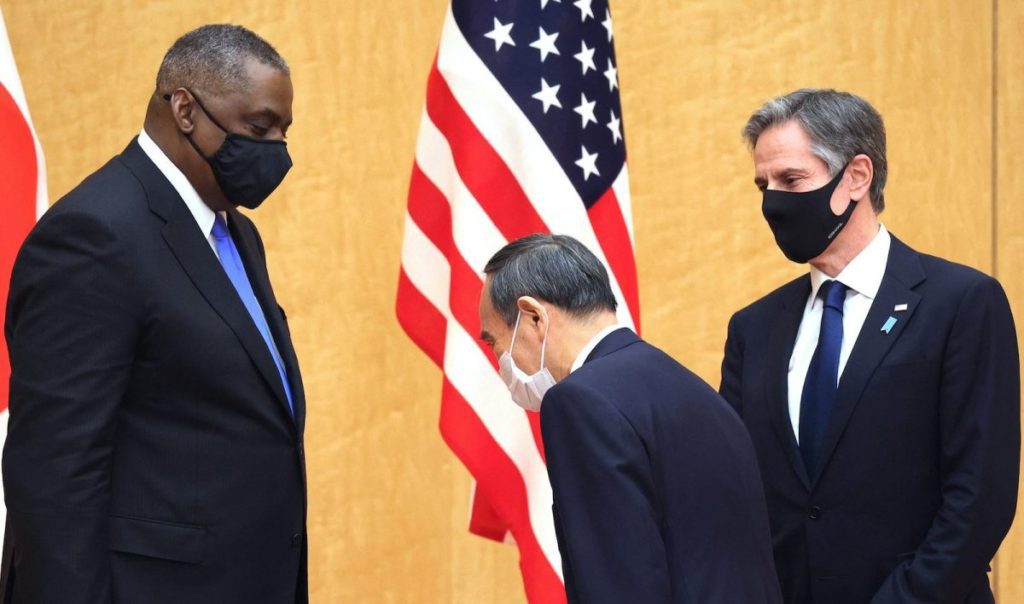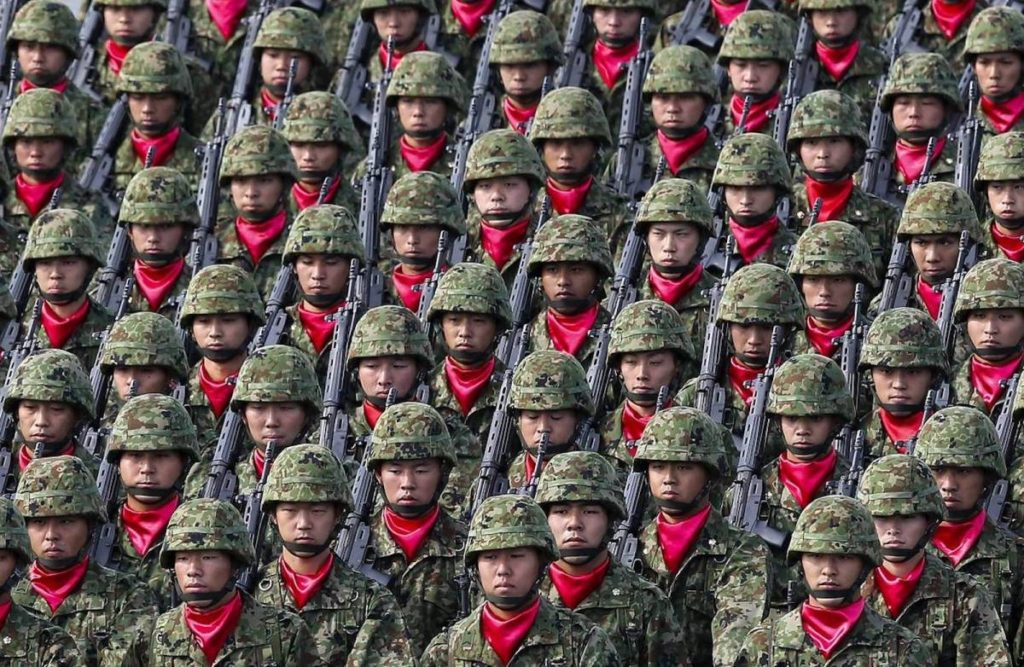Japanese Prime Minister Yoshihide Suga will be meeting US President Joe Biden on April 16 in Washington. His stated objectives: discuss China, North Korea, Taiwan, climate change, the coronavirus and strengthen the US-Japan relationship.
But Suga, like his recent predecessors, really has just one main objective in Washington: to keep the US on the hook to defend Japan.
No matter that Suga and the Japanese government have already gotten this promise three times – from Biden himself, Secretary of State Antony Blinken and Secretary of Defense Lloyd Austin.
He wants to hear it again. It’s sort of like some gal asking every five minutes, “Do you love me?” If she’s asking, she ain’t sure.
Now, one sort of understands why Suga keeps asking.
That the People’s Republic of China (PRC) intends to settle old scores and put Japan in its place has been obvious for years. Meanwhile, pressure around Japan’s Senkaku Islands from Chinese naval and coastal defense forces as well as maritime militia disguised as fishermen has become increasingly harder for the Japan Coast Guard and Self Defense Force to contain.
Even worse, the PRC recently passed a law authorizing the China Coast Guard to shoot at ships trespassing in Chinese claimed waters. And since the Senkakus and surrounding seas are to Beijing’s mind Chinese territory, well, Tokyo should get the message.
Beijing was, however, kind enough to say that it will restrain itself, for the time being. Without American support or the possibility of it, China likely would have moved already to occupy the Senkakus, daring the Japanese to do something about it.
So one understands the urgency (even if unstated) Japan feels to be reassured that Washington will defend it.
Suga’s visit will of course be cordial, and both sides will declare that the US-Japan alliance, “based on shared mutual values,” has “never been stronger” and “underpins regional security” – and that both sides are “in lock step.”

However, Chinese military and economic strength, and self-confidence (even if overweening) have reached a point that Washington’s declarations of commitment may have less deterrent effect than in years past.
The Suga-Biden talks may yield an impressive string of platitudes and promises to cooperate on climate change and Covid-19 and to keep consulting on threats to regional security. These, however, are low-hanging fruit.
What Japan wants more than anything is a promise of US firepower – though it doesn’t seem to realize that improving its own military capabilities would enhance what US forces have to offer.
In an ideal world – which this one isn’t – a meeting between a Japanese prime minister and a US president would produce tangible measures to strengthen capabilities needed to deter the PRC and if necessary defeat the PLA.
Here’s what those objectives might look like:
The two leaders agree that Japanese and American forces will improve capabilities to conduct a joint/combined defense of Japan. And they describe the concrete measures to be taken, including: What? When? How?
They agree that Japan will do what is necessary to remedy Japan Self Defense Force (JSDF) shortcomings, namely inadequate funding, recruiting shortfalls and lack of joint capability. And the JSDF will become a force that is able to fight a war. And once again: What? When? How?
References to Taiwan will go beyond “mutual concern” or even “deep concern” over the situation in the Taiwan Strait and instead offer concrete support to Taipei. Such as: the Japan Coast Guard joins the recently concluded US-Taiwan Coast Guard Working Group and dispatches JCG liaison officers to Taiwan. And Japan enacts its own version of the United States’ Taiwan Relations Act. And for all of these: What? When? How?
The Quad of course gets a mention. And more than just promises to hold a lot of future meetings, which Tokyo has traditionally considered a substitute for developing its own solid military capabilities. There are any number of possibilities.

For example, establish a standing joint US-Japan operational headquarters in Japan – with extra seats for the Australians and Indians, for starters. Or perhaps agree to invite an Australian air force squadron to set up in Japan, say at Misawa Air Base or Iwakuni Marine Corps Air Station. And don’t forget: When? Where? How?
Is any of this likely to happen when Suga and Biden meet? No. But one still holds out hope that something useful and specific might happen in Washington.
That is: the US assures Japan (and publicly states) that the Senkaku Islands are Japanese territory. Washington used to think so, but in 1972 it went “non-committal” on the sovereignty issue – as a favor to the PRC. The Chinese didn’t respond as hoped. Instead, American vagueness encouraged the Chinese to move in on the Senkakus.
It’s long overdue for the Americans to reaffirm that the Senkakus and surrounding waters belong to Japan. And that Washington will regard Chinese attempts to seize the territory – even by “gray zone” tactics – the same way as if the PLA tried to seize Hawaii.
If by some miracle this should happen, Suga ought to then announce the following:
“When I get back to Tokyo I’m going to send my best man out to Yokota Air Base to talk to the commander of the US Forces Japan. Here’s what he will say:”
I hear that you Americans have to leave Japan in order to train properly so that you are able to defend Japan. That doesn’t sound right. We shouldn’t make things so hard for our only ally. Tell me what you need and Prime Minister Suga will take care of it – will take care of it immediately.

Anyone who has watched enough visits at the high-level of this week’s Suga-Biden meeting will have low expectations. But things have reached a point in the Asia-Pacific that both sides – especially Japan – need to do more than they ever have, and do it fast.
Suga’s biggest worry ought not to be that the Americans won’t defend Japan. They will. But if Japan does not develop its own defenses into a serious force able to operate with the Americans (and the Quad), US promises – and even its actions – may not be enough.
Times have changed. Objectives must change as well.
Grant Newsham is a retired U.S. Marine officer and a former U.S. diplomat and business executive who lived and worked for many years in the Asia/Pacific region. He served as a reserve head of intelligence for Marine Forces Pacific, and was the U.S. Marine attaché, U.S. Embassy Tokyo on two occasions. He currently serves KCPAC as president.


